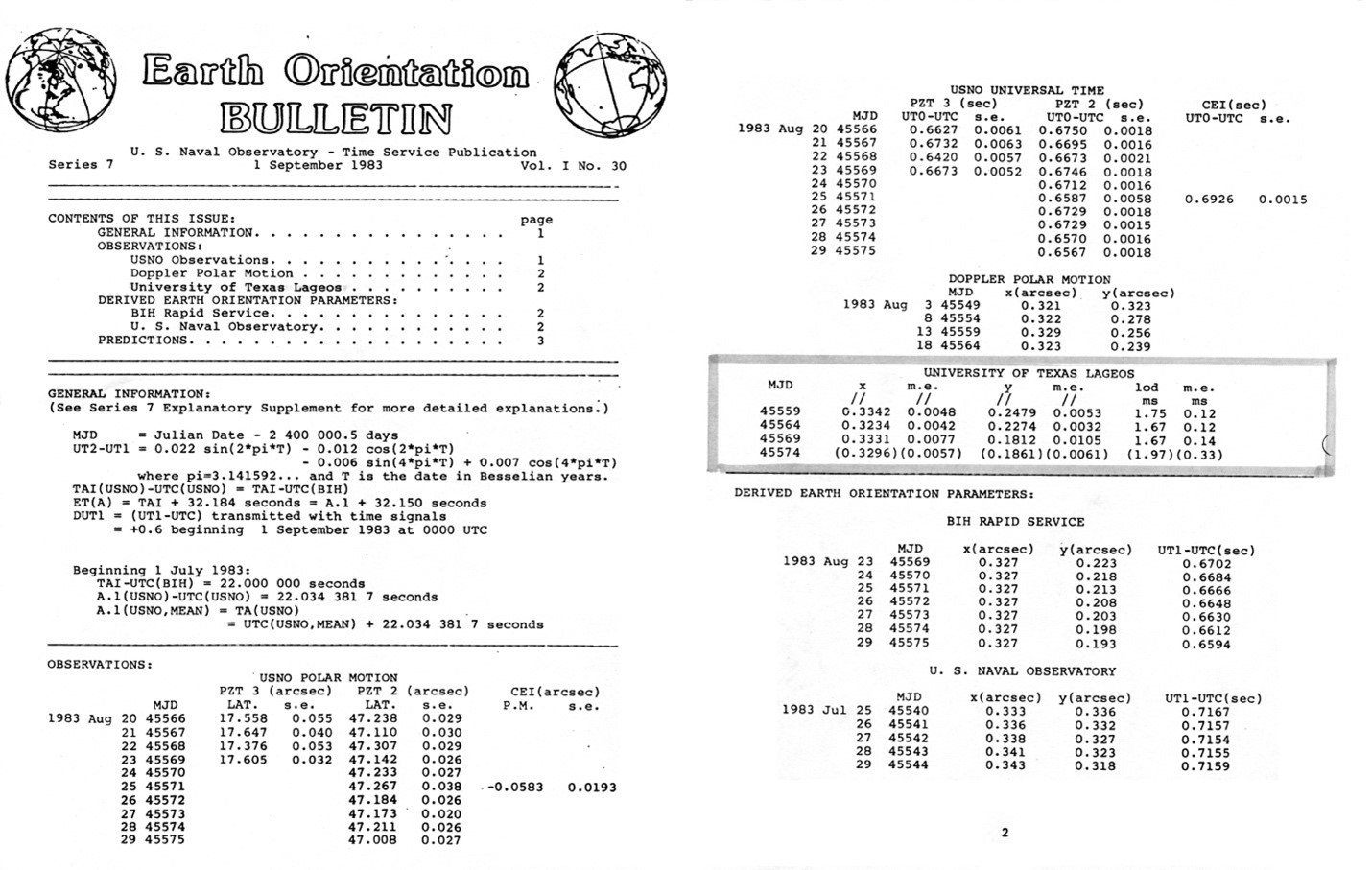Satellite Laser Ranging
Satellite and Lunar Laser Ranging at UT
The University of Texas at Austin (UT) has a rich history in satellite laser ranging (SLR) and lunar laser ranging (LLR). Laser ranging, whether for satellites or the Moon, relies on precise timing and the speed of light. A laser pulse is sent from a ground station to a target (like a geodetic satellite or a retroreflector on the Moon). The target reflects the laser beam back to the ground station. By measuring the time interval that it takes for the laser pulse to travel to the target and back, we can calculate the distance based on the speed of light. SLR currently is able to achieve few-millimeter-level precision, while LLR can measure distances to the Moon with centimeter-level precision.
Importance of SLR Analysis
The University of Texas at Austin has been at the forefront of SLR analysis since the early days of the space age. SLR data from the global network of stations, enables highly precise orbit determination and estimation of geophysical parameters. Some key applications and achievements include:
- Measuring Earth Orientation Parameters (see figure below)
- Monitoring tectonic motion through inter-station baseline rates
- Measuring station coordinates with better than 1 cm precision
- Supporting the definition of the International Terrestrial Reference Frame (ITRF)
- Supporting high-precision geodetic satellite orbit determination for oceanography
- Measuring variations in the Earth’s long-wavelength gravity field over several decades
- Supporting tests of General Relativity
UT’s Center for Space Research (CSR) is the current research center at UT continuing the long history of SLR analysis. Its expertise in SLR analysis, algorithm development, and high-performance computing has been instrumental in advancing these capabilities and enabling various geodynamic and oceanographic investigations
History of Laser Ranging at UT
In addition to state-of-the art analysis of the globally collected SLR data, the McDonald Observatory has hosted both LLR and SLR tracking stations and was the very first to attempt to range to the newly installed retroreflectors by the Apollo 11 astronauts. For the first fifteen years after the retroreflectors were place on the moon, McDonald Observatory was the only observatory that provided routine ranging to the Moon. Various NASA-supplied Earth satellite ranging stations have also operated at McDonald continuously from 1979 to 2018. Currently, the McDonald Geodetic Observatory (MGO), a joint venture between CSR, NASA, and the McDonald Observatory, was established to co-locate multiple state-of-the-art geodetic instruments, including VLBI, GNSS, and a new Space Geodesy Satellite Laser Ranging (SGSLR) system.

The University of Texas was the first laser ranging analysis center to provide operational observations of Earth Orientation Parameters (Polar Motion and Length-of-Day). Today, the Global Navigation Satellite Systems and Very-Long-Baseline-Interferometry dominate these observations.